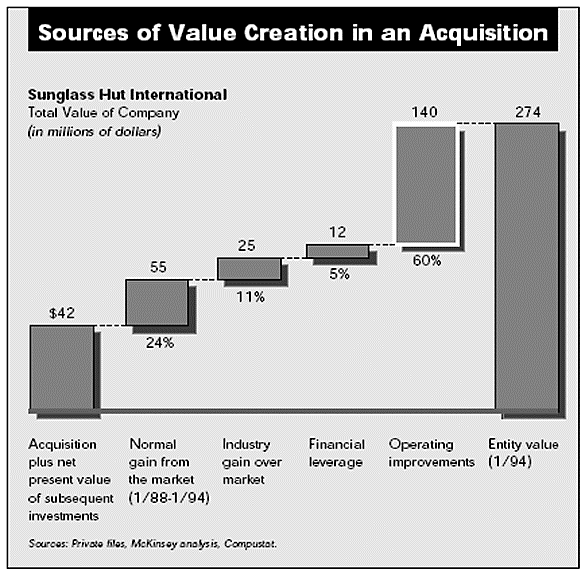Slider Image 1 Content

Appleton Greene & Co Global
The following list represents the Key Service Objectives (KSO) for the Appleton Greene Retirement Planning service.
 We understand that the success of a business relies both on the quality and commitment of its people and the organization’s ability to plan and operate strategically. We listen to you and work to understand your goals and challenges. Focused on priority objectives, we set out to develop solutions that improve plan performance and deliver tangible value to the bottom line. Start your planning today by exploring your options, including corporate benefits planning, employee benefits, 401(k) and corporate retirement plans, executive benefits, and business owner and executive succession.
We understand that the success of a business relies both on the quality and commitment of its people and the organization’s ability to plan and operate strategically. We listen to you and work to understand your goals and challenges. Focused on priority objectives, we set out to develop solutions that improve plan performance and deliver tangible value to the bottom line. Start your planning today by exploring your options, including corporate benefits planning, employee benefits, 401(k) and corporate retirement plans, executive benefits, and business owner and executive succession.
 In today’s complex benefit planning environment it is essential that you are positioned to assess benefit plan structure, claims impact, cost sharing, and various risk transfer strategies. We have experienced how a strategic approach to benefit planning and risk transfer techniques adds value to your employee benefits offering and materially improves plan performance. In light of the increased regulatory landscape and with benefit costs continuing to escalate, many businesses are rethinking their offering of employee benefits. This service provides a comprehensive analysis of your current employee benefit programs and provides a framework to: Assess cost drivers of medical and pharmacy plans; Evaluate alternative funding options; Integrate plan resources; Educate employees; Benchmark plans; Leverage technology; Negotiate premiums; Improve communications. This service assures that you have a leading, cost effective core benefits program aligned with corporate objectives to attract, retain and reward your people. The review can cover the following areas: Medical insurance: HMO, POS; Cafeteria plans; Disability; Dental; Life and AD&D; Vision; Long-term care; Critical illness; Voluntary benefits; Employee assistance programs.
In today’s complex benefit planning environment it is essential that you are positioned to assess benefit plan structure, claims impact, cost sharing, and various risk transfer strategies. We have experienced how a strategic approach to benefit planning and risk transfer techniques adds value to your employee benefits offering and materially improves plan performance. In light of the increased regulatory landscape and with benefit costs continuing to escalate, many businesses are rethinking their offering of employee benefits. This service provides a comprehensive analysis of your current employee benefit programs and provides a framework to: Assess cost drivers of medical and pharmacy plans; Evaluate alternative funding options; Integrate plan resources; Educate employees; Benchmark plans; Leverage technology; Negotiate premiums; Improve communications. This service assures that you have a leading, cost effective core benefits program aligned with corporate objectives to attract, retain and reward your people. The review can cover the following areas: Medical insurance: HMO, POS; Cafeteria plans; Disability; Dental; Life and AD&D; Vision; Long-term care; Critical illness; Voluntary benefits; Employee assistance programs.
 Appleton Greene & Co Global – Companies can elect whether they just require Appleton Greene for advice and support with the Bronze Client Service, for research and performance analysis with the Silver Client Service, for facilitating departmental workshops with the Gold Client Service, or for complete process planning, development, implementation, management and review, with the Platinum Client Service. Ultimately, there is a service to suit every situation and every budget and clients can elect to either upgrade or downgrade from one service to another as and when required, providing complete flexibility in order to ensure that the right level of support is available over a sustainable period of time, enabling the organization to compensate for any prescriptive or emergent changes relating to: Customer Service; E-business; Finance; Globalization; Human Resources; Information Technology; Legal; Management; Marketing; or Production.
Appleton Greene & Co Global – Companies can elect whether they just require Appleton Greene for advice and support with the Bronze Client Service, for research and performance analysis with the Silver Client Service, for facilitating departmental workshops with the Gold Client Service, or for complete process planning, development, implementation, management and review, with the Platinum Client Service. Ultimately, there is a service to suit every situation and every budget and clients can elect to either upgrade or downgrade from one service to another as and when required, providing complete flexibility in order to ensure that the right level of support is available over a sustainable period of time, enabling the organization to compensate for any prescriptive or emergent changes relating to: Customer Service; E-business; Finance; Globalization; Human Resources; Information Technology; Legal; Management; Marketing; or Production.
 Having a framework to support informed decision making aligned with fiduciary roles and responsibilities is critical to meeting regulatory requirements and fulfilling participant expectations. Your organization has specific goals, and your corporate retirement plan should be responsive to those goals. Key considerations, such as corporate structure, business objectives, and cash flow are factors in the decisions related to the appropriate corporate retirement plan design for the business. We have seen how a strategic approach to fiduciary responsibility can drive improved participant outcomes, help minimize fiduciary risk and supports ability to adapt plan to changing business environment and goals. Now more than ever plan sponsors are rethinking their corporate retirement plans. This service provides plan sponsors with a framework to: Assess fiduciary risk; Review competitiveness of participant outcomes; Coordinate plan resources to maximize results. This service will help you to assess fiduciary risk, review participant outcomes and determine areas for improvement. Reviews include: 401(k) plans; Profit sharing plans; Pensions and defined benefit plans; Employee stock ownership plans; 403(b) plans and tax-sheltered annuities; 412(i) plans; Small business plans; Non-qualified retirement plans.
Having a framework to support informed decision making aligned with fiduciary roles and responsibilities is critical to meeting regulatory requirements and fulfilling participant expectations. Your organization has specific goals, and your corporate retirement plan should be responsive to those goals. Key considerations, such as corporate structure, business objectives, and cash flow are factors in the decisions related to the appropriate corporate retirement plan design for the business. We have seen how a strategic approach to fiduciary responsibility can drive improved participant outcomes, help minimize fiduciary risk and supports ability to adapt plan to changing business environment and goals. Now more than ever plan sponsors are rethinking their corporate retirement plans. This service provides plan sponsors with a framework to: Assess fiduciary risk; Review competitiveness of participant outcomes; Coordinate plan resources to maximize results. This service will help you to assess fiduciary risk, review participant outcomes and determine areas for improvement. Reviews include: 401(k) plans; Profit sharing plans; Pensions and defined benefit plans; Employee stock ownership plans; 403(b) plans and tax-sheltered annuities; 412(i) plans; Small business plans; Non-qualified retirement plans.
Having carefully aligned strategies for executive compensation and benefits is essential to sustained organizational success. Whether managing a family owned business, a closely held business or a public company, this service understands how financial strategies in Executive compensation and benefits, supports organizational growth and profitability while providing stability and incentives within an executive team. In today’s competitive business environment companies are seeking ways to complement core compensation strategies with targeted executive benefit programs that help those select participants to build and protect wealth. This service enables companies to evaluate their existing offerings and creates a framework to create programs that: Align executive incentives with corporate objectives; Recruit executive talent; Define goals and reward success. This service will enable you to review your current offerings to your executive team within the context of corporate goals and current market conditions. Review can include the following areas: Non-qualified deferred compensation planning; Supplemental executive retirement plans; Key man insurance planning; Stock option planning and incentive compensation.
Succession Planning
 Planning for the successful exit of an owner or key person from your business is essential to sustained success. Every business owner, at some point, leaves their business. Whether a sale to a third party, or a transfer to an insider such as key person or family member. This service proves how well thought through exit strategies can help you realize maximum value for your ownership interests. Thousands of companies will transition ownership and leadership over the coming decade. Many businesses do not have a plan for the current ownership to successfully exit and transition the business. This service helps you and the business to: Define the owner’s or executive’s exit objectives; Establish a framework to review and refine the exit plan; Motivate owners to execute the plan; Realize maximum value from the business; Evaluate tax planning alternatives; Instill confidence and success within succession. This service centers on the goals the business must achieve for you or a key person to leave it in style. Reviews can include the following areas: Buy-sell planning; Business valuation planning; Merger and acquisition support; Preparing for and structuring the business sale; ESOP and qualified retirement plan strategies.
Planning for the successful exit of an owner or key person from your business is essential to sustained success. Every business owner, at some point, leaves their business. Whether a sale to a third party, or a transfer to an insider such as key person or family member. This service proves how well thought through exit strategies can help you realize maximum value for your ownership interests. Thousands of companies will transition ownership and leadership over the coming decade. Many businesses do not have a plan for the current ownership to successfully exit and transition the business. This service helps you and the business to: Define the owner’s or executive’s exit objectives; Establish a framework to review and refine the exit plan; Motivate owners to execute the plan; Realize maximum value from the business; Evaluate tax planning alternatives; Instill confidence and success within succession. This service centers on the goals the business must achieve for you or a key person to leave it in style. Reviews can include the following areas: Buy-sell planning; Business valuation planning; Merger and acquisition support; Preparing for and structuring the business sale; ESOP and qualified retirement plan strategies.
This service is primarily available to the following industry sectors:

Assets of the largest 1,000 banks in the world grew by 6.8% to a record US$96.4 trillion while profits declined by 85% to US$115 billion. Growth in assets in adverse market conditions was largely a result of recapitalization. EU banks holds the largest share of the total, 56%. Asian banks’ share amounts to 14%, while the share of US banks amounts to 13%. Fee revenue generated by global investment banking totals US$66.3 billion. The United States has the most banks in the world in terms of institutions i.e. 7,085 including 82,000 branches. This is an indicator of the geography and regulatory structure of the USA, resulting in a large number of small to medium-sized institutions in its banking system. China’s top 4 banks have in excess of 67,000 branches with an additional 140 smaller banks. Japan has 129 banks and 12,000 branches. Germany, France, and Italy each had more than 30,000 branches – more than double the 15,000 branches in the UK. Financial services are the economic services provided by the finance industry, which encompasses a broad range of organizations that manage money, including credit unions, banks, credit card companies, insurance companies, accountancy companies, consumer finance companies, stock brokerages, investment funds and some government sponsored enterprises. The financial services industry represents 20% of the market capitalization of the S&P 500 in the United States. Finance industry income as a proportion of GDP is 7.5%, and the finance industry’s proportion of all corporate income is 20%. The financial services industry constitutes the largest group of companies in the world in terms of earnings and equity market capitalization. However it is not the largest category in terms of revenue or number of employees. It is also a slow growing and extremely fragmented industry, with the largest company (Citigroup), only having a 3% US market share.
 Insurance
InsuranceGlobal insurance premiums grew by 2.7% in inflation-adjusted terms to $4.3 trillion, climbing above pre-crisis levels. The return to growth and record premiums generated during the year followed two years of decline in real terms. Life insurance premiums increased by 3.2% and non-life premiums by 2.1%. While industrialized countries saw an increase in premiums of around 1.4%, insurance markets in emerging economies saw rapid expansion with 11% growth in premium income. The global insurance industry was sufficiently capitalized to withstand the financial crisis and most insurance companies have restored their capital to pre-crisis levels. With the continuation of the gradual recovery of the global economy, it is likely the insurance industry will continue to see growth in premium income both in industrialized countries and emerging markets. Advanced economies account for the bulk of global insurance. With premium income of $1.62 billion, Europe is the most important region, followed by North America $1.409 billion and Asia $1.161 billion. Europe has however seen a decline in premium income in contrast to the growth seen in North America and Asia. The top four countries generated more than a half of premiums. The United States and Japan alone account for 40% of world insurance, much higher than their 7% share of the global population. Emerging economies account for over 85% of the world’s population but only around 15% of premiums. Their markets are however growing at a quicker pace. The country expected to have the biggest impact on the insurance share distribution across the world is China, which is expected to be the largest insurance market in the next decade or two. The insurance industry comprises establishments that are primarily engaged in the pooling of risk by underwriting insurance (i.e., assuming the risk and assigning premiums) and annuities. The insurance industry is a highly fragmented and includes segments such as life insurance and non-life insurance. The European region currently dominates this industry; however, Latin America, eastern Europe, and the Middle East are expected to lead the industry in the future. Asia is expected to grow the fastest over the next decade.

Retail is the sale of goods and services from individuals or businesses to the end-user. Retailers are part of an integrated system called the supply chain. A retailer purchases goods or products in large quantities from manufacturers directly or through a wholesale, and then sells smaller quantities to the consumer for a profit. Retailing can be done in either fixed locations like stores or markets, door-to-door or by delivery. An increasing amount of retailing is done using online websites, electronic payment, and then delivered via a courier or via other services. Rising GDP growth, burgeoning population, greater disposable income, and increasing consumer spending are combining to drive the Global Retail industry and opportunities for retail segment players. The market is forecast to reach an estimated $20,002 billion with a CAGR of 3.9% over the next five years. The retail industry comprises establishments engaged in selling merchandise or commodities for personal or household consumption, mainly consisting of apparel and accessories, technology, food and beverages, home improvement, specialty, pharmaceuticals, and others. Recently, as developed nations begin to emerge from recession, their economies recover, and unemployment rates begin to fall, the market segments are experiencing some renewed growth. The retail industry is highly fragmented and is dependent on macroeconomic factors such as GDP, disposable income, and consumer spending. Asia Pacific (APAC) dominates the industry, representing 35% of the global market. The APAC retail industry is expected to drive the market and grow at the highest rate among all regions. The global economic recession, inflation, and high unemployment rates are some of the challenges that are negatively affecting the retail industry. Conversely, some factors that are likely to boost sales in the industry include urbanization, technological growth, increase in product demand and selection, and the continued popularity of online purchasing. A combination of factors such as demographics and consumer spending habits impacts market dynamics significantly.
 Aviation
AviationAviation is the practical aspect or art of aeronautics, being the design, development, production, operation, and use of aircraft, especially heavier-than-air aircraft. Aviation is a vital part of the increasingly globalized world economy, facilitating the growth of international trade, tourism and international investment, and connecting people across continents. The aviation industry itself is a major direct generator of employment and economic activity, in airline and airport operations, aircraft maintenance, air traffic management, head offices and activities directly serving air passengers, such as check-in, baggage handling, on-site retail and catering facilities. Direct impacts also include the activities of aerospace manufacturers selling aircraft and components to airlines and related businesses. The world’s airlines carry over 2.6 billion passengers a year and 48 million tons of freight. Providing these services generates 8.4 million direct jobs within the air transport industry and contributes $539 billion to global GDP. Compared with the GDP contribution of other sectors, the global air transport industry is larger than the pharmaceuticals ($445 billion), the textiles ($236 billion) or the automotive industries ($484 billion) and around half as big as the global chemicals ($977 billion) and food and beverage ($1,162 billion) sectors. Air transport also has important ‘multiplier’ effects, which mean that its overall contribution to global employment and GDP is much larger than its direct impact alone. These include employment and activities of suppliers to the air transport industry for example, aviation fuel suppliers; construction companies that build airport facilities; suppliers of sub-components used in aircraft; manufacturers of goods sold in airport retail outlets; and a wide variety of activities in the business services sector (such as call centers, information technology and accountancy). Over 9.3 million indirect jobs globally are supported through the purchase of goods and services by companies in the air transport industry. These indirect jobs contribute approximately $618 billion to global GDP.

Manufacturing is the production of merchandise for use or sale using labor and machines, tools, chemical and biological processing, or formulation. In a free market economy, manufacturing is usually directed toward the mass production of products for sale to consumers at a profit. In a collectivist economy, manufacturing is more frequently directed by the state to supply a centrally planned economy. In mixed market economies, manufacturing occurs under some degree of government regulation. Modern manufacturing includes all intermediate processes required for the production and integration of a product’s components. Some industries, such as semiconductor and steel manufacturers use the term fabrication instead. The manufacturing sector is closely connected with engineering and industrial design. According to some economists, manufacturing is a wealth-producing sector of an economy, whereas a service sector tends to be wealth-consuming. Emerging technologies have provided some new growth in advanced manufacturing employment opportunities in the Manufacturing Belt in the United States. Manufacturing provides important material support for national infrastructure and for national defense. On the other hand, most manufacturing may involve significant social and environmental costs. The clean-up costs of hazardous waste, for example, may outweigh the benefits of a product that creates it. Hazardous materials may expose workers to health risks. These costs are now well known and there is effort to address them by improving efficiency, reducing waste, using industrial symbiosis, and eliminating harmful chemicals. The increased use of technologies such as 3D printing also offer the potential to reduce the environmental impact of producing finished goods through distributed manufacturing.

Monthly cost: USD $1,500.00
Time limit: 5 hours per month
Contract period: 12 months
Bronze service includes:
01. Email support
02. Telephone support
03. Questions & answers
04. Professional advice
05. Communication management

SERVICE DESCRIPTION
The Bronze Client Service (BCS) for Retirement Planning provides clients with an entry level option and enables client contacts to become personally acquainted with Mr. Hodgkinson over a sustainable period of time. We suggest that clients allocate up to a maximum of 5 Key Employees for this service. Your Key Employees can then contact the consultant via email, whenever they feel that they need specific advice or support in relation to the consultant’s specialist subject. The consultant will also be proactive about opening and maintaining communications with your Key Employees. Your Key Employees can list and number any questions that they would like to ask and they will then receive specific answers to each and every query that they may have. Your Key Employees can then retain these communications on file for future reference. General support inquiries will usually receive replies within 48 hours, but please allow a period of up to 10 business days during busy periods. The Bronze Client Service (BCS) enables your Key Employees to get to know their designated Appleton Greene consultant and to benefit from the consultant’s specialist skills, knowledge and experience.

Monthly cost: USD $3,000.00
Time limit: 10 hours per month
Contract period: 12 months
Bronze service plus
01. Research analysis
02. Management analysis
03. Performance analysis
04. Business process analysis
05. Training analysis

SERVICE DESCRIPTION
The Silver Client Service (SCS) for Retirement Planning provides more time for research and development. If you require Mr. Hodgkinson to undertake research on your behalf, or on behalf of your Key Employees, then this would understandably require more time and the Silver Client Service (SCS) accommodates this. For example, you may want your consultant to undertake some research into your management, performance, business, or training processes, with a view towards providing an independent analysis and recommendations for improvement. If any research and development, or business analysis is required, then the Silver Client Service (SCS) is for you.

Monthly cost: USD $4,500.00
Time limit: 15 hours per month
Contract period: 12 months
Bronze/Silver service plus
01. Management interviews
02. Evaluation and assessment
03. Performance improvement
04. Business process improvement
05. Management training

SERVICE DESCRIPTION
The Gold Client Service (GCS) for Retirement Planning is intended for more detailed evaluation and assessment, that may require your Key Employees to have monthly meetings or interviews with Mr. Hodgkinson These meetings and interviews can be conducted over the telephone, Skype, or by video conference if required. The consultant can also attend your business premises, an Appleton Greene office, or another mutually beneficial location, but please note that clients are responsible for the costs of any disbursements separately, including travel and accommodation. This service enables you to integrate the specific skills, knowledge and experience of your designated consultant into your Key Employee management team. The Gold Client Service (GCS) can also incorporate training workshops, business presentations and external meetings with customers, suppliers, associations, or any other business-related stakeholders.

Monthly cost: USD $6,000.00
Time limit: 20 hours per month
Contract period: 12 months
Bronze/Silver/Gold service plus
01. Project planning
02. Project development
03. Project implementation
04. Project management
05. Project review

SERVICE DESCRIPTION
The Platinum Client Service (PCS) for Retirement Planning is our flagship service and will be required if you need Mr. Hodgkinson to facilitate the planning, development, implementation, management, or review of a particular project relating to his specialist subject, which would obviously require more time and dedication. This service enables you to reserve up to 12.5% of the consultant’s working month and provides a more hands-on service as and when required. If you need more time than this, then this can always be arranged, subject of course to the consultant’s ongoing availability. The benefit of having an external consultant involved in projects is they provide an independent perspective and are not influenced by internal politics, day-to-day responsibilities, or personal career interest. They provide objectivity, specific knowledge, skills and experience and will be entirely focused upon the tasks at hand. The Platinum Client Service (PCS) will provide your organization with a valuable resource as and when you need it.
This list comprises a selection of international organizations, from within each industry sector, that have employed the services of Appleton Greene Consultants, Learning Providers, Standard Programs, or Bespoke Programs, either directly or independently. This provides clients with an insight into the extensive international industry experience that is available from Appleton Greene.

Agricultural Bank of China
Allianz
American Express
Australia and New Zealand Banking Group
Aviva
AXA
Banco Bradesco
Banco do Brasil
Bank of America
Bank of China
Barclays
Berkshire Hathaway
BNP Paribas
China Construction Bank
Citigroup
Commonwealth Bank
Crédit Agricole
Credit Suisse Group
Deutsche Bank
Fannie Mae
Freddie Mac
Generali Group
Goldman Sachs Group
HSBC
Industrial and Commercial Bank of China
ING Group
Itaú Unibanco
Japan Post Bank
JPMorgan Chase
Lloyds Banking Group
Metlife
Mitsubishi UFJ Financial Group
Mizuho Financial Group
Morgan Stanley
Munich Re
National Australia Bank
Prudential
Royal Bank of Canada
Santander Group
Sberbank of Russia
Société Générale
Sumitomo Mitsui Financial Group
Toronto-Dominion Bank
UBS
Wells Fargo
Westpac
Zurich Insurance Group

ACE
Aflac
Allianz
Allstate
Aviva
AXA Group
Cathay Financial
China Life Insurance
China Pacific Insurance
CNA Financial
Generali Group
ING Group
Manulife Financial
MetLife
Munich Re
Ping An Insurance Group
Prudential
Prudential Financial
QBE Insurance Group
Sun Life Financial
Swiss Re
The Travelers Companies
Tokio Marine Holdings
Zurich Financial Services

Aeon Co Ltd
Aldi Einkauf GmbH & Co
Alimentation Couche-Tard Inc
Amazon.com, Inc
Best Buy Co Inc
Carrefour SA
Casino Guichard-Perrachon SA
Centres Distributeurs E Leclerc
Coop Group
Costco Wholesale Corporation
CVS Caremark Corp
Delhaize Group SA
Edeka Zentrale AG & Co KG
El Corte Ingl
Groupe Auchan SA
Grupo P -Brazil
HE Butt Grocery Company
Inditex SA
ITM D
J Sainsbury plc
JC Penney Company Inc
Kohl’s Corporation
Koninklijke Ahold NV
Loblaw Companies Limited
Lowe’s Companies Inc
Macy’s Inc
Mercadona SA
Metro AG
Migros-Genossenschafts Bund
Publix Super Markets Inc
Rewe Group
Rite Aid Corporation
Safeway Inc
Schwarz Unternehmens Treuhand KG
Sears Holdings Corp
Seven & i Holdings Co Ltd
SuperValu Inc
Syst
Target Corp
Tesco PLC
The Home Depot Inc
The IKEA Group (INGKA Holding BV)
The Kroger Co
The TJX Companies Inc
Walgreen Co
Wal-Mart Stores Inc
Wesfarmers Limited
WM Morrison Supermarkets PLC
Woolworths Limited
Yamada Denki Co Ltd

Apple
ArcelorMittal
BASF
BMW
Boeing
Bosch
Cardinal Health
Caterpillar
China Minmetals
Daimler
Dell
Dongfeng Motor Group
Dow Chemical
EADS
Exor
FAW Group
Ford-Automotive
Fujitsu
General Electric
Hewlett-Packard
Hitachi
Hon Hai Precision Industry
Honda
Hyundai Motor Company
IBM
Johnson & Johnson
Mitsubishi
Mitsui
Nestle
Nissan
Novartis
Panasonic
PepsiCo
Peugeot
Pfizer
POSCO
Procter & Gamble
Renault
SAIC Motor
Saint-Gobain
Samsung Electronics
Siemens
Sinochem
Sony
ThyssenKrupp
Toshiba
Toyota
Unilever
United Technologies
This service is primarily available within the following locations:

Miami is a major center of commerce, finance, and boasts a strong international business community. According to the ranking of world cities undertaken by the Globalization and World Cities Study Group & Network (GaWC) and based on the level of presence of global corporate service organizations, Miami is considered a “Alpha minus world city”. Miami has is ranked 20th worldwide in GMP, and 11th in the United States. Several large companies are headquartered in or around Miami, including but not limited to: Akerman Senterfitt, Alienware, Arquitectonica, Arrow Air, Bacardi, Benihana, Brightstar Corporation, Burger King, Celebrity Cruises, Carnival Corporation, Carnival Cruise Lines, CompUSA, Crispin Porter + Bogusky, Duany Plater-Zyberk & Company, Espírito Santo Financial Group, Fizber.com, Greenberg Traurig, Holland & Knight, Inktel Direct, Interval International, Lennar, Navarro Discount Pharmacies, Norwegian Cruise Lines, Oceania Cruises, Perry Ellis International, RCTV International, Royal Caribbean Cruise Lines, Ryder Systems, Seabourn Cruise Line, Sedano’s, Telefónica USA, TeleFutura, Telemundo, Univision, U.S. Century Bank,Vector Group and World Fuel Services. Because of its proximity to Latin America, Miami serves as the headquarters of Latin American operations for more than 1400 multinational corporations, including AIG, American Airlines, Cisco, Disney, Exxon, FedEx, Kraft Foods, LEO Pharma Americas, Microsoft, Yahoo, Oracle, SBC Communications, Sony, Symantec, Visa International, and Wal-Mart.

Finance, retail, healthcare, insurance, shipping by air and sea, national defense, professional sports, tourism, and real estate all play vital roles in the area’s economy. Hillsborough County alone has an estimated 740,000 employees, a figure which is projected to increase to 922,000. Several large corporations, such as banks and telecommunications companies, maintain regional offices in Tampa. Several Fortune 1000 companies are headquartered in the metropolitan area, including OSI Restaurant Partners, WellCare, TECO Energy, and Raymond James Financial. Tampa’s port is now the seventh largest in the nation and Florida’s largest tonnage port, handling nearly half of all seaborne commerce that passes through the state. Tampa currently ranks second in the state behind Miami in terms of cruise ship travel. Besides smaller regional cruise ships such as Yacht Starship and SunCruz Casino, Tampa also serves as a port of call for three cruise lines: Holland America’s MS Ryndam, Royal Caribbean’s Grandeur of the Seas and Radiance of the Seas, and Carnival’s Inspiration and Legend. MacDill Air Force Base remains a major employer as the parent installation for over 15,000 active uniformed military, Department of Defense(DoD) civil service and DoD contractor personnel in the Tampa Bay area. A significant majority of the civil service and contractor personnel are, in fact, themselves retired career military personnel. In addition to the 6th Air Mobility Wing, which is “host wing” for the base, MacDill is also home to Headquarters, United States Central Command (USCENTCOM), Headquarters, United States Special Operations Command(USSOCOM), the 927th Air Refueling Wing, Headquarters, United States Marine Forces Central Command (USMARCENT), Headquarters, United States Special Operations Command Central (USSOCCENT), and numerous other military activities of the active and reserve components of the armed forces. Tampa has seen a notable upsurge in high-market demand from consumers, signaling more wealth concentrated in the area.

As one of the world’s most visited tourist destinations, Orlando’s famous attractions form the backbone of its tourism industry: Walt Disney World, located approximately 21 miles (34 km) southwest of Downtown Orlando in Bay Lake, opened by the Walt Disney Company in 1971; the Universal Orlando Resort, opened in 1999 as a major expansion of Universal Studios Florida. With the exception of Walt Disney World, most major attractions are located along International Drive. The city is also one of the busiest American cities for conferences and conventions; the Orange County Convention Center is the second-largest convention facility in the United States. Orlando also has a major industrial and hi-tech center. The metro area has a $13.4 billion technology industry employing 53,000 people and is a nationally recognized cluster of innovation in digital media, agricultural technology, aviation, aerospace, and software design. More than 150 international companies, representing approximately 20 countries, have facilities in Metro Orlando. Orlando has the 7th-largest research park in the country, Central Florida Research Park, with over 1,025 acres (4.15 km2). It is home to over 120 companies, employs more than 8,500 people, and is the hub of the nation’s military simulation and training programs. Near the end of each year, the Orange County Convention Center hosts the world’s largest modeling and simulation conference: Interservice/Industry Training, Simulation and Education Conference (I/ITSEC). Metro Orlando is home to the simulation procurement commands for the U.S. Army, Navy, Air Force, Marines and Coast Guard. Lockheed Martin has a large manufacturing facility for missile systems, aeronautical craft and related high tech research. Other notable engineering firms have offices or labs in Metro Orlando: KDF, General Dynamics, Harris, Mitsubishi Power Systems, Siemens, Veritas/Symantec, multiple USAF facilities, Naval Air Warfare Center Training Systems Division, Delta Connection Academy, Embry–Riddle Aeronautical University, GE, Air Force Agency for Modeling and Simulation (AFAMS), U.S. Army Program Executive Office for Simulation, Training, and Instrumentation (PEO STRI), United States Army Research, Development and Engineering Command United States Army Simulation and Training Technology Center (STTC), AT&T, Boeing, CAE Systems Flight and Simulation Training, Hewlett-Packard, Institute for Simulation and Training, National Center for Simulation, Northrop Grumman, and Raytheon Systems.

Jacksonville’s location on the St. Johns River and the Atlantic Ocean proved providential in the growth of the city and its industry. Jacksonville has the largest deepwater port in the South (as well as the second-largest port on the U.S. East coast) and a leading port in the U.S. for automobile imports, as well as the leading transportation and distribution hub in the state. However, the strength of the city’s economy lies in its broad diversification. Jacksonville is home to many prominent corporations and organizations, including the headquarters of four Fortune 500 companies: CSX Corporation, Fidelity National Financial, Fidelity National Information Services and BI-LO (United States) including it’s subsidiary Winn-Dixie Stores, Inc. In addition to CSX, the Florida East Coast Railway as well as Swisher International Group and the large short line railroad holding company RailAmerica are also based in Jacksonville.

The Atlanta metropolitan area is the eighth-largest economy in the country and 17th-largest in the world. Corporate operations comprise a large portion of the Atlanta’s economy, with the city serving as the regional, national, or global headquarters for many corporations. Atlanta contains the country’s third largest concentration of Fortune 500 companies, and the city is the global headquarters of corporations such as The Coca-Cola Company, The Home Depot, Delta Air Lines, AT&T Mobility, UPS, and Newell-Rubbermaid. Over 75 percent of Fortune 1000 companies conduct business operations in the Atlanta metropolitan area, and the region hosts offices of about 1,250 multinational corporations. Many corporations are drawn to Atlanta on account of the city’s educated workforce; nearly 43% of adults in the city of Atlanta have college degrees, compared to 27% in the nation as a whole and 41% in Boston. Delta Air Lines, the city’s largest employer and the metro area’s third largest, operates the world’s largest airline hub at Hartsfield-Jackson Atlanta International Airport and has helped make Hartsfield-Jackson the world’s busiest airport, both in terms of passenger traffic and aircraft operations. Media is also an important aspect of Atlanta’s economy. The city is a major cable television programming center. Information technology, an economic sector that includes publishing, software development, entertainment and data processing has, garnered a larger percentage of Atlanta’s economic output. Indeed, Atlanta contains the fourth-largest concentration of information technology jobs in the United States.

“Performance improvement has to be the core objective of any training program. At Appleton Greene, this is achieved by ensuring that each program incorporates the implementation of a tangible business process. As they say, processes drive business, but it is always people who drive processes. Therefore, this kind of productive and interactive training is mission critical for any company that trades internationally.”
A quotation taken from a client reference within the Banking & Financial Services.

“Risk assessment is our business. So, we are drawn towards products and services which are inherently risk-averse. Appleton Greene’s programs are cost-efficient, time-efficient, process-efficient and risk-efficient. There is therefore no apparent risk involved because their processes merely assist our staff to undertake an internal analysis into our own processes and procedures and any changes that are made are made by us at our discretion.”
A quotation taken from a client reference within the Insurance industry.

“Managed outsourcing is the key to successful manufacturing these days. It would appear that the same principle applies to good education. The high points of my MBA and DBA were the opportunities to interact with industry specialists and successful business leaders. Appleton Greene recognizes this and is developing an impressive catalog of tangible programs and encourages learning providers to outsource to specialist consultants and business leaders as much as possible. This helps to bring the programs to life in the real world and engages and challenges employees.”
A quotation taken from a client reference within the Aviation.

“The retail industry has changed considerably during the past 50 years. Much of our success today is based upon our ability to collaborate and to form strategic alliances with a variety of national and international business partners. Appleton Greene has embraced this philosophy with great effect and although they are still a small lean company, they are truly multi-national and multi-industrial in their approach.”
A quotation taken from a client reference within the Retail> industry.

“Successful growth on a global scale is determined by the quality of strategic partnering or strategic alliance management. Appleton Greene has been a real find in terms of corporate training services because their flexibility and international coverage makes them a valuable asset to have.”
A quotation taken from a client reference within the Manufacturing industry.
Mr Chicles is an approved Certified Learning Provider (CLP) at Appleton Greene who is a business leader and strategist with broad experience in the global multi-industrial, aerospace and defense sectors. He is a seasoned operational leader of global industrial businesses, leading transformational strategies in highly competitive markets.
As a senior, C-suite strategist for multiple major industrial corporations he has led multiple mergers, acquisitions, divestitures and restructurings, as well as corporate break-ups and spin-offs. He has a distinguished track record of successful transformations of complex organizations in dynamic and uncertain market conditions while engendering the trust and buy-in of employees, customers, vendors, owners, corporate leadership and boards of directors.
A highly engaged leader at the personal and team level he has demonstrated the ability to engender effective senior teams and boards. He’s also an active mentor, teacher and community leader.
Mr Chicles is an active board member with AES Seals, global leader in sustainable reliability engineering, and Micro Technologies Inc, an electronics and advanced manufacturing company. He is a principal partner with ProOrbis Enterprises®, a management science consultancy with premier clients such as the US Navy and PwC, as well as the principal of Xiphos Associates™, a management and M&A advisory. Recently, he served as Board Director and Chairman of Global Business Development with Hydro Inc. the largest independent pump and flow systems engineering services provider in the world.
He was President of ITT’s Industrial Process / Goulds Pumps business segment a global manufacturer of industrial pumps, valves, monitoring and control systems, and aftermarket services for numerous industries with $1.2 billion in revenue, 3,500 employees and 34 facilities in 17 countries. Preceding this role he served as Executive Vice President of ITT Corporation overseeing the creation of a newly conceived ITT Inc. following the break-up of the former ITT Corporation to establish its strategy and corporate functions such as HR, communications, IT and M&A, building the capabilities, policies and organizations for each.
He joined ITT Corporation’s executive committee as its strategy chief in 2006 and instituted disciplined strategic planning processes and developed robust acquisition pipelines to respond to rapidly changing markets. Created successful spin-offs of 2 new public corporations Exelis Inc. and Xylem Inc. ITT Corporation was named one of “America’s Most Respected Corporations” by Forbes for exemplary management and performance during his tenure there.
Before joining ITT, Mr Chicles served as Vice President of Corporate Business Development and head of mergers and acquisitions for American Standard / Trane Companies, where he initiated and closed numerous transactions and equity restructurings globally.
Additionally, he created and led the corporate real estate function which entailed more than 275 real estate transactions around the world.
He began his career at Owens Corning rising through the ranks in various operational roles to Vice President of Corporate Development.
Recently, he taught advanced enterprise strategy at Stevens Institute of Technology as an adjunct professor and still supports start-ups through the Stevens Venture Center. He continues to be active as the Founding Board Member with several successful start-up technology businesses and non-profit organizations. A community leader, Mr Chicles has held the role of President of the Greek Orthodox Cathedral in Tenafly, N.J., He also led trips abroad to Cambodia and Costa Rica to build sustainable clean-water solutions and affordable housing.
His formal education includes earning a Masters of Business Administration from The Wharton School at the University of Pennsylvania, and a Bachelors in Finance from Miami University.

Appleton Greene corporate training programs are all process-driven. They are used as vehicles to implement tangible business processes within clients’ organizations, together with training, support and facilitation during the use of these processes. Corporate training programs are therefore implemented over a sustainable period of time, that is to say, between 1 year (incorporating 12 monthly workshops), and 4 years (incorporating 48 monthly workshops). Your program information guide will specify how long each program takes to complete. Each monthly workshop takes 6 hours to implement and can be undertaken either on the client’s premises, an Appleton Greene serviced office, or online via the internet. This enables clients to implement each part of their business process, before moving onto the next stage of the program and enables employees to plan their study time around their current work commitments. The result is far greater program benefit, over a more sustainable period of time and a significantly improved return on investment.

Appleton Greene uses standard and bespoke corporate training programs as vessels to transfer business process improvement knowledge into the heart of our clients’ organizations. Each individual program focuses upon the implementation of a specific business process, which enables clients to easily quantify their return on investment. There are hundreds of established Appleton Greene corporate training products now available to clients within customer services, e-business, finance, globalization, human resources, information technology, legal, management, marketing and production. It does not matter whether a client’s employees are located within one office, or an unlimited number of international offices, we can still bring them together to learn and implement specific business processes collectively. Our approach to global localization enables us to provide clients with a truly international service with that all important personal touch. Appleton Greene corporate training programs can be provided virtually or locally and they are all unique in that they individually focus upon a specific business function. All (CLP) programs are implemented over a sustainable period of time, usually between 1-4 years, incorporating 12-48 monthly workshops and professional support is consistently provided during this time by qualified learning providers and where appropriate, by Accredited Consultants.

In today’s context of changing markets, technologies and business models, and in conjunction with historic levels of available capital, acquisitive growth has emerged as an increasingly compelling approach to transformational growth. However, as has been empirically proven growth through acquisitions is fraught with pitfalls and inherently risky. Successfully acquisitive growth requires the confluence of many factors that go beyond the traditional phased steps of a typical process. In my experience success is a function of bringing together the elements of people, processes, and technologies into a set of capabilities that are custom-made for an organization’s particular strengths, circumstances and aspirations. Winning in today’s dynamic markets demands bold, unique and sustainable strategies. The following are the stages of such an approach that I have found to create high probability, profitable growth that stands the test of time.
Additionally, while the M&A industry has many advisors available, they tend not to be operating executives who have lived through all the elements I will lay out below. Many simplistic guidelines exist, however what its clear is that the difference between success and failure with acquisitive growth is not in rote adherence to some set of processes, rather it is found in the combination of process discipline and strong application of experiential, practical knowhow. The nature of this knowhow is to apply and allocate the elements below in a smart, efficient manner to achieve exemplary outcomes for the specific client’s unique situation and circumstances.
Strategy Development: Whether at the corporate level or in a specific business unit, clients would be taken through steps to clarify the markets and segments where they currently compete and where they want to go in the future, what differentiates them from competition, where capabilities need to be refined or built, and the various functional elements (e.g. systems, processes, structures, etc.) critical to sustain profitable growth. Approach would be a combination of review of current strategies/capabilities, interviews and facilitated discussions and structured workshops. Outcomes might be a strategy to bring a particular business into a new growth phase or to meet changing competitive environments, or at the enterprise level might entail “platform building” whereby new businesses, sectors or legs are build from the ground up through foundational initial acquisitions and subsequent organic and inorganic initiatives.
Market Focus: Where will we hunt for acquisition targets? If a company allows too-wide of a scope will find themselves suffering from expensive resource drains/distractions and/or dilute efforts. Therefore, following the alignment of enterprise/business strategies the process will seek to focus the market segments and the business criteria to qualify a company to be elevated to possible target.
Research Possible Targets: Simply put, take the descriptions and criteria from above and create lists of potential targets that might fit. Each such company is researched for available information, any currently available knowledge the client might have, etc. Output is a gross list of possible targets.
Target Approach: Utilizing a number of possible approaches, one that is appropriate for the client is determined. For example, some companies may have business development or sales teams who could participate in this stage, or on the other hand for reasons such as confidentiality, resource scarcity, etc this might need to be put into the hands of specific individuals (senior executives, dedicated M&A executives, 3rd party services, etc.). Each company is different, so this is an exercise of matching needs with capabilities. The objective is to screen the gross target list to elminate those who have “killer facts” such as big contingent liabilities, prohibitive complexity such as a company with a complex ownership structure, our any other aspects that renders a target not acceptable for the next step.
Cultivation: This is a very critical part of the overall process. The essence of this authentic, genuine and meaningful relationship-buidling which requires a combination of individuals with certain skill-sets to ‘sell’ the prospects on being acquired, patience and persistence. I have many approaches, processes and techniques that I have and continue to use to great effect in this regard. Output is a short list of interested targets who have moved to active discussions and in-person meetings.
Target Assessment: During the cultivation phase as it gets more advanced, a critical success factor for effective acquisitive growth is the ability to narrow the list with limited amounts of information. This is important because the next phase is quite intensive so any company can not practically thoroughly assess all such targets. In other words, how does a client gain the insights needed to do this? Some might consider this the ‘phase I due diligence’ whereby, prior to the engagement of expensive resources such as lawyers, accountants, etc., an overview of a target’s current status is determined. Through structured and open discussions, the client engages in discussions with the targets to learn as much as possible..
Preliminary Offer: Structuring of a term sheet or letter of intent based on finding to date. Depending on these findings, certain terms may be included to lay out a) value expectations; b) focus for due diligences and commitment to support it; and c) various legal terms typical for these agreements. This tend to be non-binding agreements meant to establish exclusivity of dealings for a period of time, high level terms that both parties agree to, and confidentiality. Given my background, I have the abilility to craft these documents with minimal legal cost.
Due Diligence: This is yet another element of acquisitions that can take several different forms. Depending on the situation and capabilities of both clients and targets, due diligence activites tend to have different scopes and approaches that match each particular circumstance. A simple example would be a private company target versus a public company. With the latter, sellers often limit potential acquirers to only publicly available information whereas private companies may have limited information at their disposal. Therefore, each approach must be designed for purpose, with the output being a customized plan for a particular target. This leads to both more efficient and cost effective processes as well as deeper insights to help with final decisions.
Deal Making: After the due diligence phase, and with a set of terms already agreed, the negotiations begin to finalized the terms of value, liabilities and the myriad legal and busses considerations that must be addressed and finalized. Whether as chief negotiator or as a trusted advisor to the same, I would bring my experience and talent to bear on this phase as well as some structured approaches/guidelines.
Integration Planning: Concurrent with the commencement of due diligence, full attention is required to determine the structure, resources, plans and teams for post-closing integration. Specific approaches and processes would be employed here to ensure that a proper integration leader is named (critical), robust but prioritized integration plans (e.g. IT and Finance integration might be a first priority for some companies), organizational and assimilation plans, and specific actions in several other area. Among the more difficult and critical elements of integration is culture. While culture is a key consideration in the pre-offer phases, it tends to be among the more challenging aspects to successful acquisitions and an area where experience from a career of hands-on accountability of acquisitions brings valuable insights. Several pro-active approaches can be introduced to the clients to determine which is best to employ with any particular integration.
Execution: From plans to execution requires much more than a roadmap. While such roadmaps are critical, it is the confluence of leadership and human capital, prioritized focused actions to achieve specific results, and finally sustainable integration to bring into the client’s company the full potential of the value creation possible. Tools exist and can be created to provide structure and management support to achieve this consistently.

This program has thus far concentrated on the role that acquisition strategies play in driving growth.
However, this assumes that the acquisitions are carried out properly on its own. Experience has shown that acquisitions may both produce and destroy value, with the execution of the transaction typically making the difference.
The following are crucial and strategic elements that support successful acquisitions:
• Considering strategic fit: Purchasing merely for the sake of purchasing is little more than management hubris. The target businesses should in some manner meet the needs of the buyer’s company strategy (i.e. product or service line, geographic reach, etc.).
• Addressing culture fit: Due to cultural mismatches between the two merging organizations, some of the largest mergers in history have failed. It is important to take into account a company’s culture because it directly affects how it creates value.
• Doing thorough due diligence: This guarantees that the buyer “looks beneath the hood” of the company they are buying and that the price they are looking to pay for the company reflects its intrinsic value.
• Integration: Even when the share purchase agreement’s ink dries, the deal is not finalized. The two businesses must now start an integration process to ensure that they grow into something greater than the sum of their individual parts.

10 advantages of expanding your company through acquisition
If you’re deciding whether to enter into an acquisition contract, you might wish to take into account the following list of acquisition benefits:
1. Strengthens a failing business
The company you work for might be going through a period of underperformance, and an acquisition might be the answer. The ability to work together as a team rather than alone may be a key factor in the business’ success. As you get to share resources with the company you’re merging with, this can assist keep the business from failing.
2. Secure financing for growth
By making an acquisition, a company might gain access to money or other important assets that it might not otherwise have at its disposal. You can easily acquire these assets with the aid of an acquisition. The firm and its employees may benefit from collaborating with a company that has sufficient resources because the development of the enterprise is the ultimate objective.
3. Have access to skilled personnel of high caliber
An acquisition can aid in boosting both the amount and quality of employees who are knowledgeable about the demands of the company. The experienced staff often stays on the firm payroll after an acquisition is completed so they can integrate. Their business acumen contributes to the companies’ success after the merger.
4. Expand the company’s market.
The corporation may diversify its offerings of goods and services as a result of the acquisition. You can make a variety of goods and distribute them to various target consumers. An acquisition often aids in a company’s development and growth.
5. Increase market influence
When you enter a new market, making an acquisition might help you combine market forces and exercise control. The synergy it offers increases your market presence and market share. If you plan to establish branches or subsidiary businesses, an acquisition may assist you lessen competition and preserve market dominance.
6. Make sure more capital is available.
Because the company is now larger after an acquisition, access to cash is improved. Higher cash and funds are available and accessible as a result of the arrangement. Amountable capital may be extended to both companies according on the agreement the companies come to when making the purchase.
7. A decrease in training expenses
Through an acquisition, your company may be able to cut internal training costs by using resources from the other acquired company. The cost of employee training is not necessary if the acquired firm develops its resources. You can use the company’s resources, depending on their state of development, to train other employees so they can develop their skill set.
8. Boost the competitiveness of your business
A purchase can take care of the requirement to adhere to higher standards as a result of the development in technical advancements. By joining forces with a smaller company that possesses the required technologies, a larger corporation can maintain its competitive position. Long-term gains from this may accrue to both businesses.
9. Lower production expenses
If you can use another company’s production facilities, facilities, and storage space, merging with them can save your production expenses. Building these kinds of facilities can be expensive, but if the business expands, it might be necessary. Sharing resources could significantly affect the budget and production costs.
10. Enable you to fulfill stakeholder expectations
Stakeholders could have expectations for the company’s growth, and making an acquisition is an effective strategy to achieve such expectations. An purchase increases the likelihood of investment returns, which may gratify the stakeholders. The pressure from the stakeholders can be handled more easily by making an acquisition, and you can even surpass their expectations.

Investigating less evident problems within the target company is the goal of the due diligence procedure.
This ranges from contracts with sizable clients that are about to expire to potential legal proceedings resulting from past business decisions.
But there are a few things that the buyer should watch out for on a more strategic level.
They consist of the following:
• Culture: Even if this phrase keeps coming up, it is crucial to the success of M&As. The culture of the target company should be thoroughly researched by prospective buyers in order to have a sense of what they are getting into.
• Competitive Edge: Is the target company “plain vanilla” or does it engage in any activities that offer it a competitive advantage (which we’ll define as the capacity to produce above-market value over the long term)?
• Leadership: Would the target company’s leadership complement your own leadership team in a positive way? Spend some time with them while conducting your research to see whether this might be the case.
• Possibilities: Are there any prospects that the target firm can take advantage of that your business won’t be able to in the near future? Let’s say it’s because of a service or product line they offer that is expected to see rapid expansion.
• Synergies: Where do your two companies’ synergies lie? Are they really complementary, or does purchasing the target company actually run the danger of causing some of your company’s income streams to be cannibalized?
The following list represents the Key Program Objectives (KPO) for the Appleton Greene Acquisitive Growth corporate training program.



It’s challenging to make this kind of acquisition successful. Seven fundamental operating principles are used by profitable corporate and financial purchasers, according to research. Almost all phases of the acquisition process, from the selection of candidates through post-merger management, are impacted by these ideas.
• Insist on cutting-edge operating tactics.
• If you can’t identify the leader, don’t make the deal.
• Provide top executives with significant incentives.
• Connect pay to variations in cash flow.
• Accelerate the rate of change.
• Encourage lively interactions between the board, managers, and owners.
• Employ the top acquirers.

High-profile leveraged buyouts like those of Duracell International, Uniroyal, and RJR Nabisco have garnered a lot of attention since the early 1980s. Prices, clever financial arrangements, and bargaining strategies have received a lot of attention. However, the other 2,200+ buyouts that took place during that time period and the fundamental changes in operational procedures that led to profitable outcomes for many of those businesses have received little attention. Although many observers think that LBO enterprises find hidden treasures in the market, more often than not, they only concentrate on enhancing operations.
Two acquisitions, Sunglass Hut International and Snapple Beverage Corporation, show that operating performance—rather than financial leverage, market timing, or industry selection—is the main driver of value creation in successful acquisitions.
Desai Capital focused on accelerating sales growth and developed a new strategy to achieve so when it acquired Sunglass Hut. By acquiring smaller stores in turn and introducing a new store model, Sunglass Hut has expanded from 150 locations to more than 800 since the initial acquisition in 1988. This growth has led to an astounding 37% yearly return. The business introduced a broad product selection rather than depending on two or three popular lines, replaced clerks with limited knowledge of sunglasses with educated customer-service specialists, and implemented a low-cost regional approach.

Another illustration of operating improvements is the 1992 purchase of Snapple by renowned financial acquirer Thomas H. Lee Company. Snapple launched an aggressive growth strategy based on quick global expansion and product range extensions shortly after the takeover. The business immediately established its production and distribution network since it anticipated that rivals will soon release their own natural teas and fruit juices. It entered into contractual agreements with bottling and distribution businesses that had excess production capacity, allowing it to launch its product one year before major rivals like Fruitopia (from the Minute Maid division of Coca-Cola Company) and achieve a competitive advantage.
As the Snapple case demonstrates, innovative operating methods help acquirers succeed in fiercely competitive markets like the American food and beverage sector. The takeaway: Don’t limit your search for success to high-growing industries.